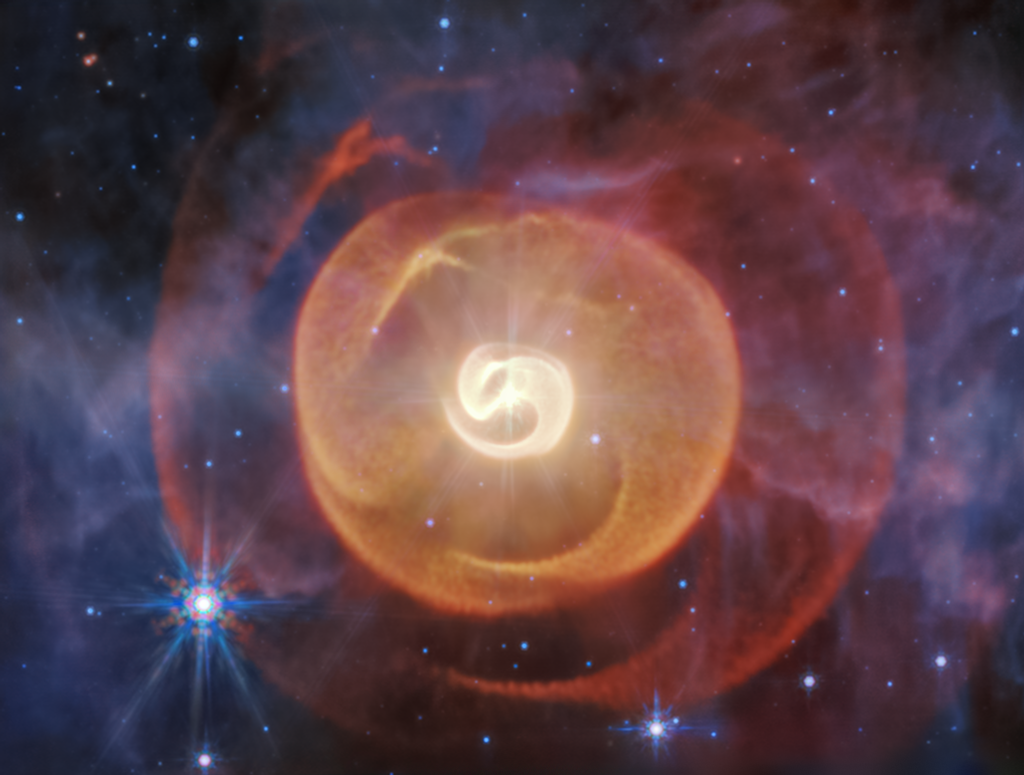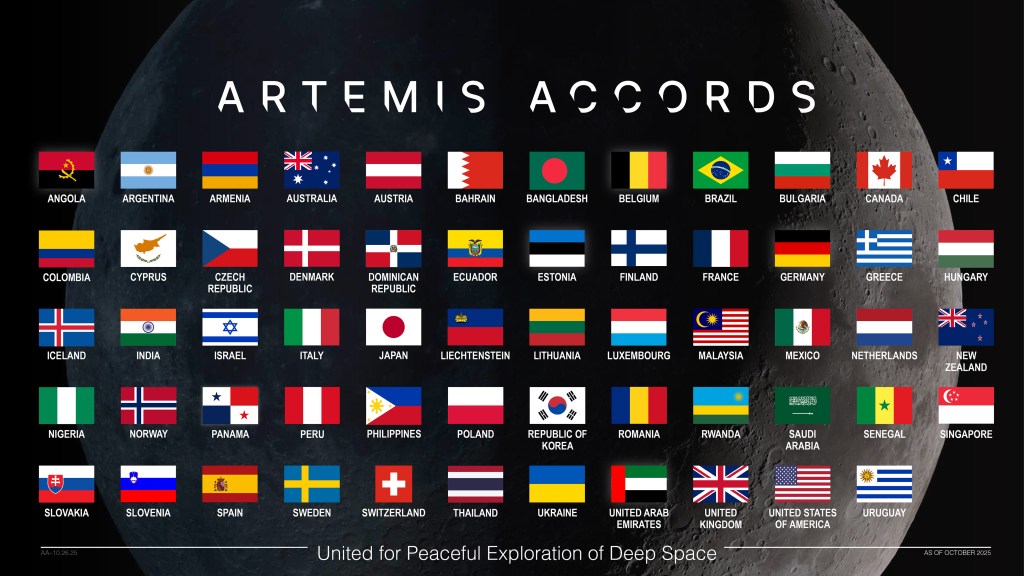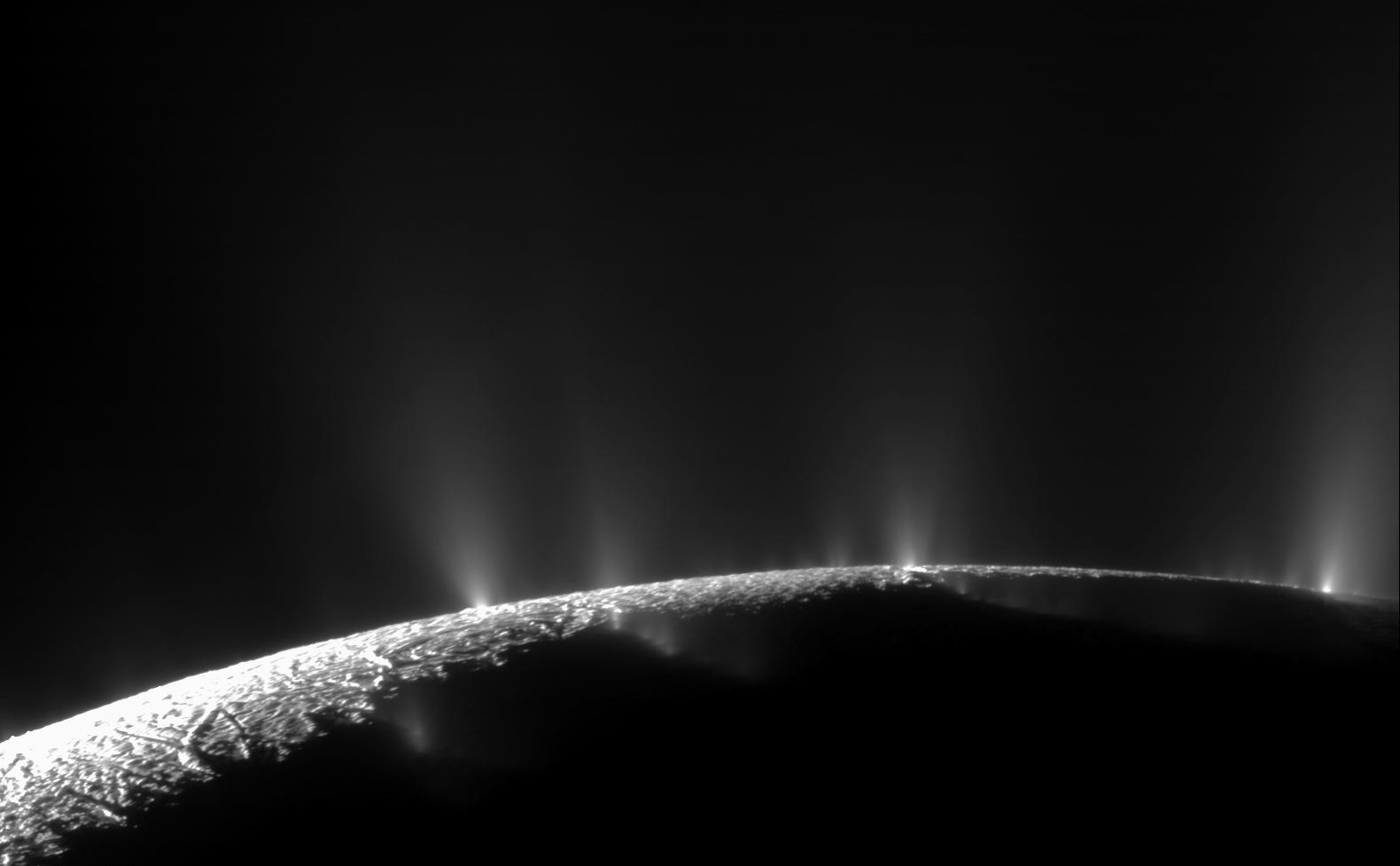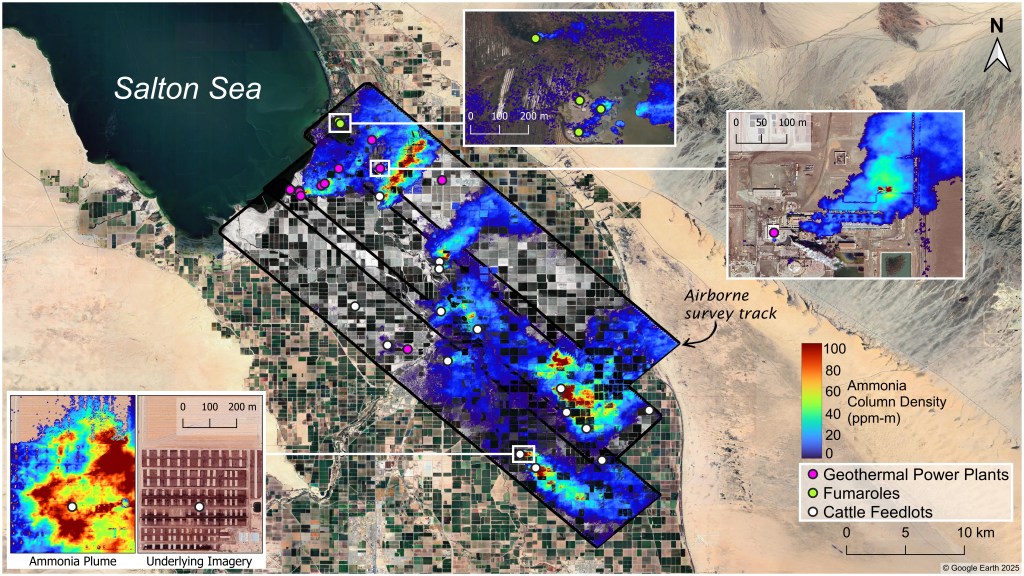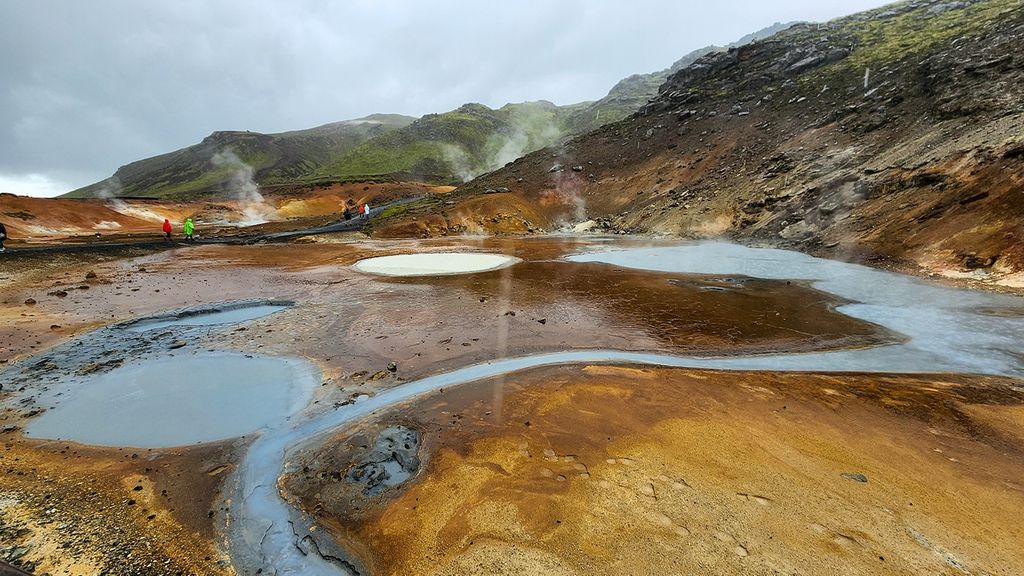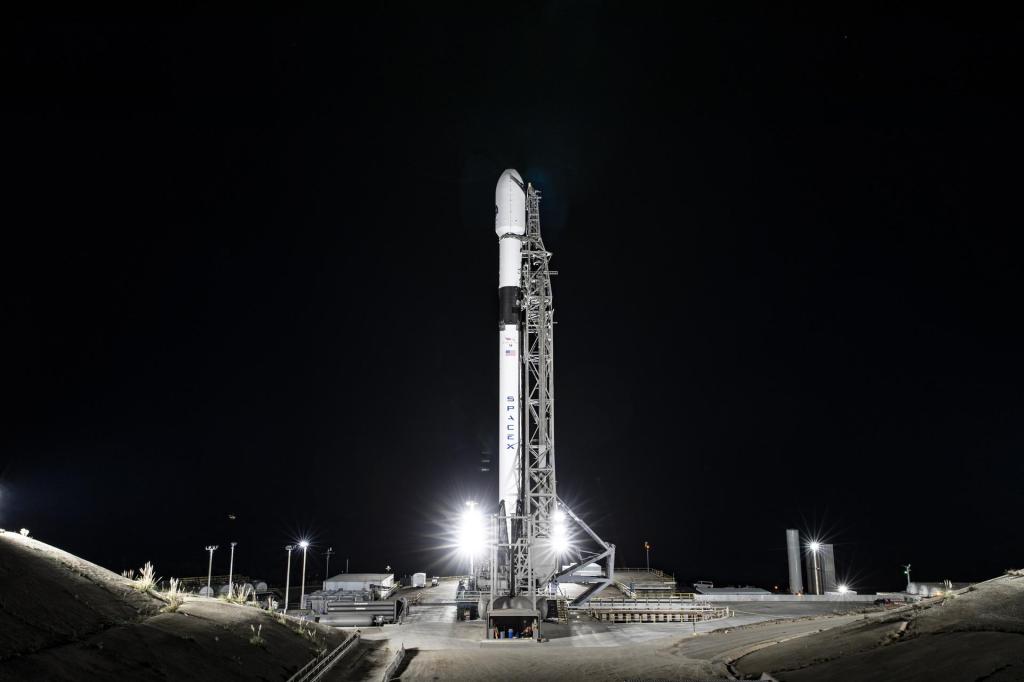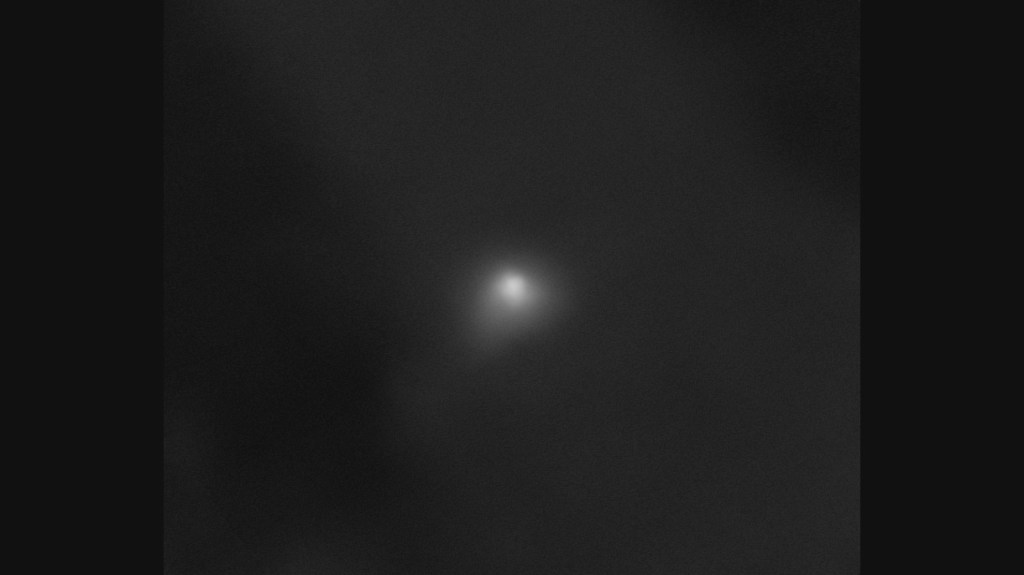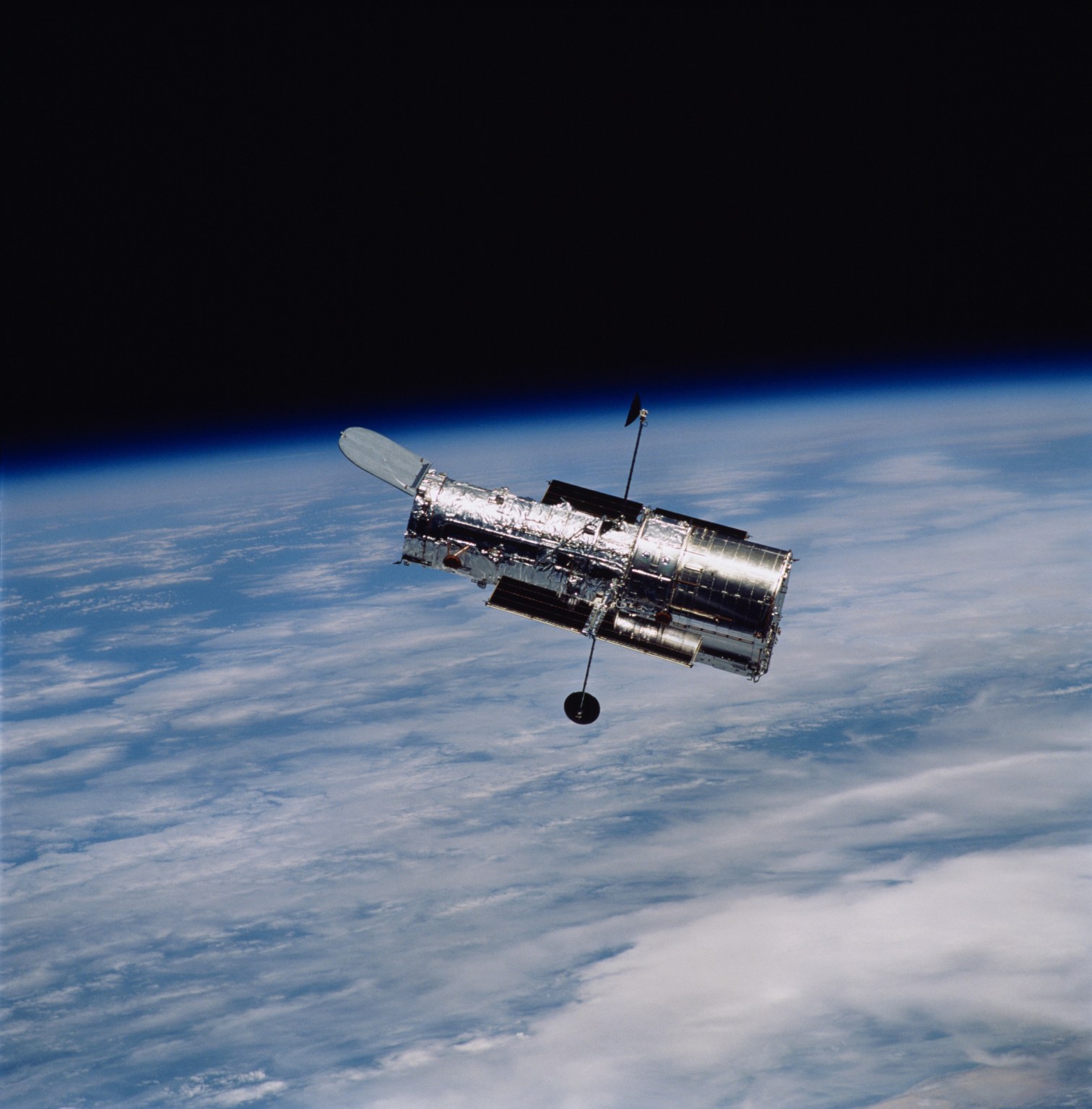1 min read
V838 Monocerotis
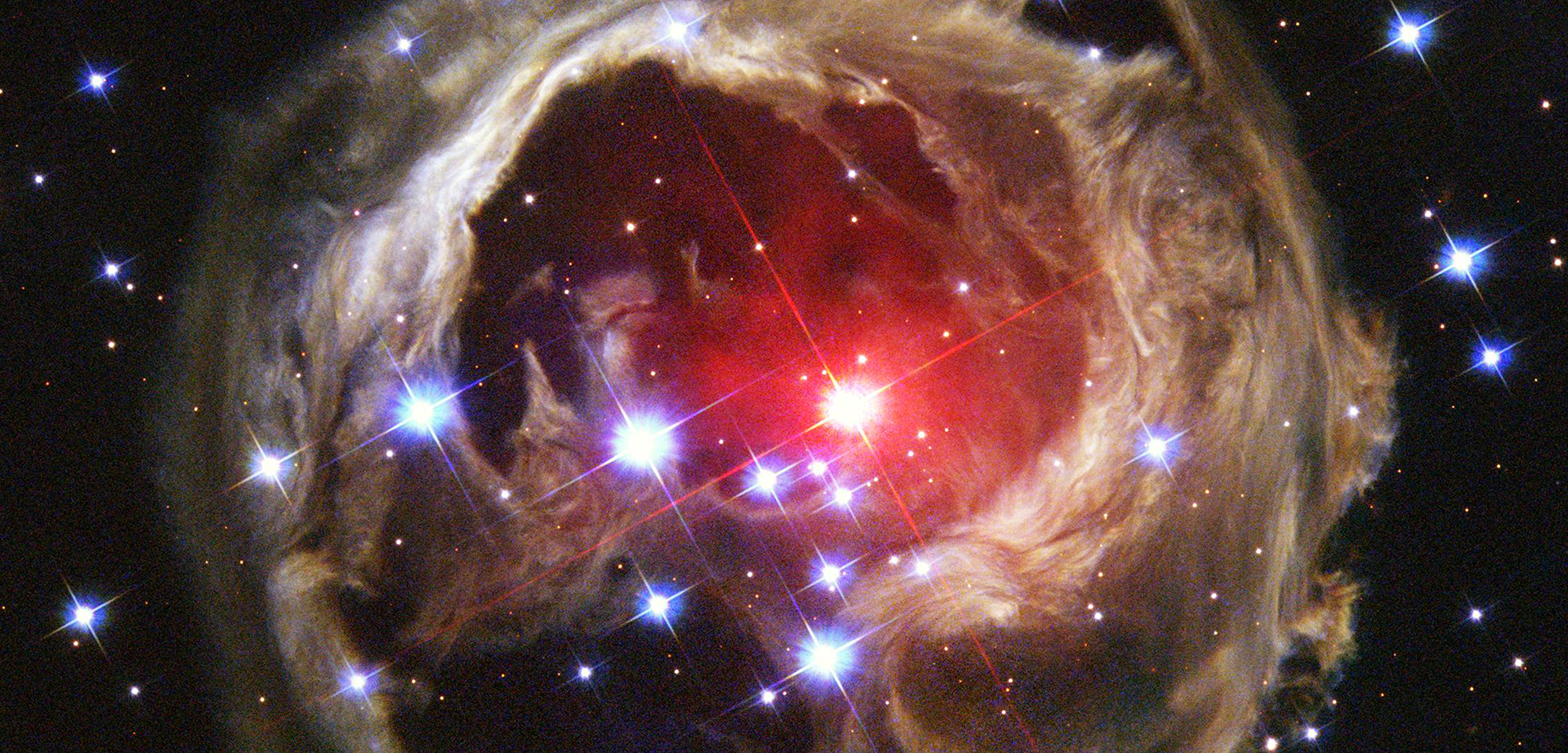
A halo of light surrounds an unusual, variable star called V838 Monocerotis (V838 Mon). Called a light echo, the expanding illumination of interstellar dust around the star has been revealing remarkable structures in the dusty cloud ever since the star suddenly brightened in January 2002. V838 Mon temporarily became 600,000 times brighter than our Sun, until it faded in April 2002. It was one of the brightest stars in the entire Milky Way. The reason for the eruption is still unclear.
The red supergiant star, seen in the middle of the image, is located about 20,000 light-years away from Earth in the direction of the constellation Monoceros, at the outer edge of our Milky Way Galaxy. The star has some similarities to a class of objects called "novae," which suddenly increase in brightness due to thermonuclear explosions at their surfaces. However, the detailed behavior of V838 Mon, in particular its extremely red color, has been completely different from any previously known nova.
The light from V838 Mon scatters or "echoes" off the dust and then travels to Earth. Because of the extra distance the scattered light travels, it reaches Earth long after the light from the stellar outburst itself. Therefore, a light echo is an analog of a sound echo produced, for example, when sound from an Alpine yodeler echoes off of the surrounding mountainsides.
Hubble has observed the V838 Mon light echo several times since 2002. Light from V838 Mon continues propagating outward. Each new observation of the light echo reveals a new and unique "thin-section" through the interstellar dust around the star. Scientists have been studying the structure of V838 Mon to understand the distribution of dust revealed by the echo, and to determine what prompted the progenitor star to create the outburst.
Constellation: Monoceros
Distance: ~20,000 light-years (~6 kiloparsecs)
Instrument: Advanced Camera for Surveys/WFC
Image Filters: F435W (B), F606W (V), F814W (I)
- Object NameObject NameA name or catalog number that astronomers use to identify an astronomical object.V838 Monocerotis
- Release DateMarch 4, 2004
- Credit
Share
Details
Claire Andreoli
NASA’s Goddard Space Flight Center
Greenbelt, Maryland
claire.andreoli@nasa.gov

